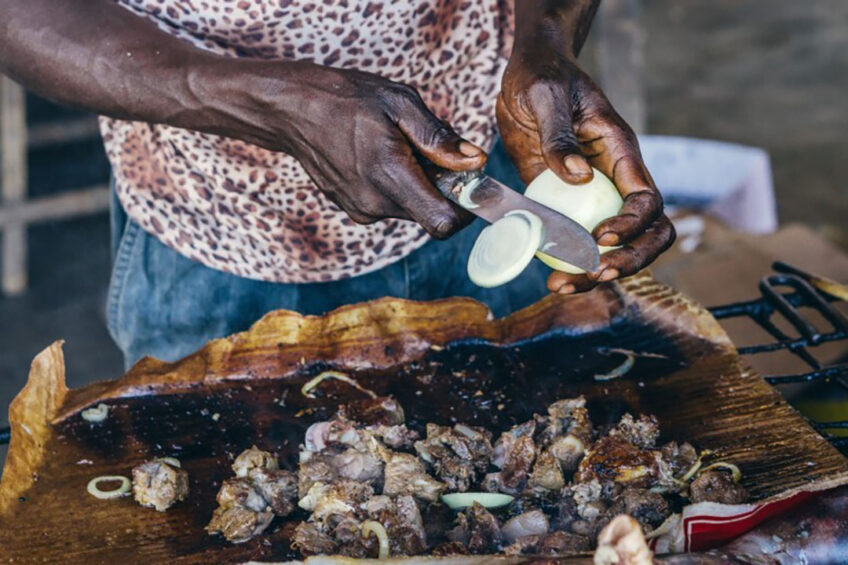Angola remains reliant on poultry imports

Although Angola’s poultry sector faces numerous challenges and relies heavily on imports for chicken meat, the government is making significant investments in national production.
The government of Angola is significantly investing in national poultry production as it seeks to diversify the economy and reduce the country’s high economic dependence on the oil sector. The poultry sector faces numerous challenges, including a lack of animal feed, veterinary medicine, general infrastructure, and the prohibition of genetically engineered feed products. Nevertheless, poultry production is forecast to increase from 31,000 mt in 2021 to 32,000 mt in 2022. In 2020, poultry meat production was 29,860 mt, a 5.9% increase from 2019.
Costly poultry feed imports
Angola does not produce sufficient grains and oilseeds (cereal production in 2020 was 2.9 mmt) and so the poultry sector relies on imported animal feed. To add to the cost of imports, the country does not permit the entry of genetically engineered products, making animal feed very expensive for local poultry farmers, particularly with the steep devaluation of the local currency, called the kwanza. On average, the cost of production for live birds weighing 1.5 kg is between 900 and 1,200 kwanzas (US$ 1.50 to US$ 2). Some estimates note that it is 4 times more expensive per kg to purchase domestic chicken meat compared to imported chicken meat.
Backyard chickens and some commercial production
Production consists mainly of backyard chickens and a few commercial farms. Angola’s Ministry of Agriculture and Fisheries reports that in 2020, 404 family producers of chicken declared 4,610 birds, resulting in an average of 11 birds per household. On the other hand, the 160 commercial producers reported 121,821 birds, with an overall average of 761 birds per producer.
Using nature to tackle heat stress
The Dutch initiative Trees for Cows has planted over 114,000 trees since the year 2000. Their long term goal is to create many cool and shady places in and along pastures for dairy cows to find shade during extreme temperatures. The initiative urges livestock farmers to start planting trees now to profit from them later. Read more…
Self-sufficient in eggs
The National Association of Poultry Producers of Angola estimates egg production between 65 and 70 million eggs per month. On average, the cost of production for 1 egg is around 30 kwanzas (US$ 0.05). In April 2015, a presidential decree stated that eggs could only be imported if there was less than 28 days from production to entry into Angola. This measure effectively ended egg imports and increased domestic production. Angola’s domestic production of eggs has since increased steadily and the country is now self-sufficient.
More than half the population in poverty
On top of a small increase in 2021, consumption is expected to grow in 2022 to reach 277,000 mt (2021: 261,000 mt). While imported chicken meat is the most affordable and consumed animal protein in Angola, demand has been depressed due to strained consumer purchasing power. The Angolan National Institute of Statistics estimates the national poverty rate was 54% as of late 2020. The Covid-19 pandemic has also severely affected the economy – 99% of the Angolan revenues rely on oil exports and global oil demand fell. Between January and April 2021, poultry consumption rebounded to 86% of the level seen in the same period of 2020.
Research heralds better poultry for sub-Saharan Africa
Researchers found that birds from 2 distinct indigenous chicken ecotypes in Ethiopia share several genetic regions linked to important productivity and disease resistance traits. Read more…
Frozen chicken leg quarters dominate market
Imported chicken meat is mostly composed of frozen chicken leg quarters and is typically purchased by the informal market from wholesalers. The retail sector targets the middle/high income families with whole chicken (1.1kg and 1.2kg) and other chicken cuts (gizzards, wings, drumsticks, hearts, chicken breasts, etc.). Chicken feet are also very popular with the Chinese community in Angola. Fresh chicken meat is not popular as fresh chicken meat is generally 2-3 times more expensive compared with imported frozen whole chicken.
Elections impact imports
Imports account for about 85% of consumption. Angola imported 213,000 mt of poultry meat in 2020, 230,000 mt is expected in 2021, and 245,000 mt is forecast for 2022. Increased imports in 2022 are expected due to the upcoming presidential election. The Angolan government has typically tended to allow a greater volume of imports during election years to ensure prices remain stable and the electorate do not face food shortages. The US is the largest supplier of poultry meat to Angola and is expected to remain so – in 2020, Angola was the 9th largest market for US frozen poultry products. Angola does not currently have sufficient production to export poultry or poultry products.
The information in this article has been extracted from a USDA GAINS report.












